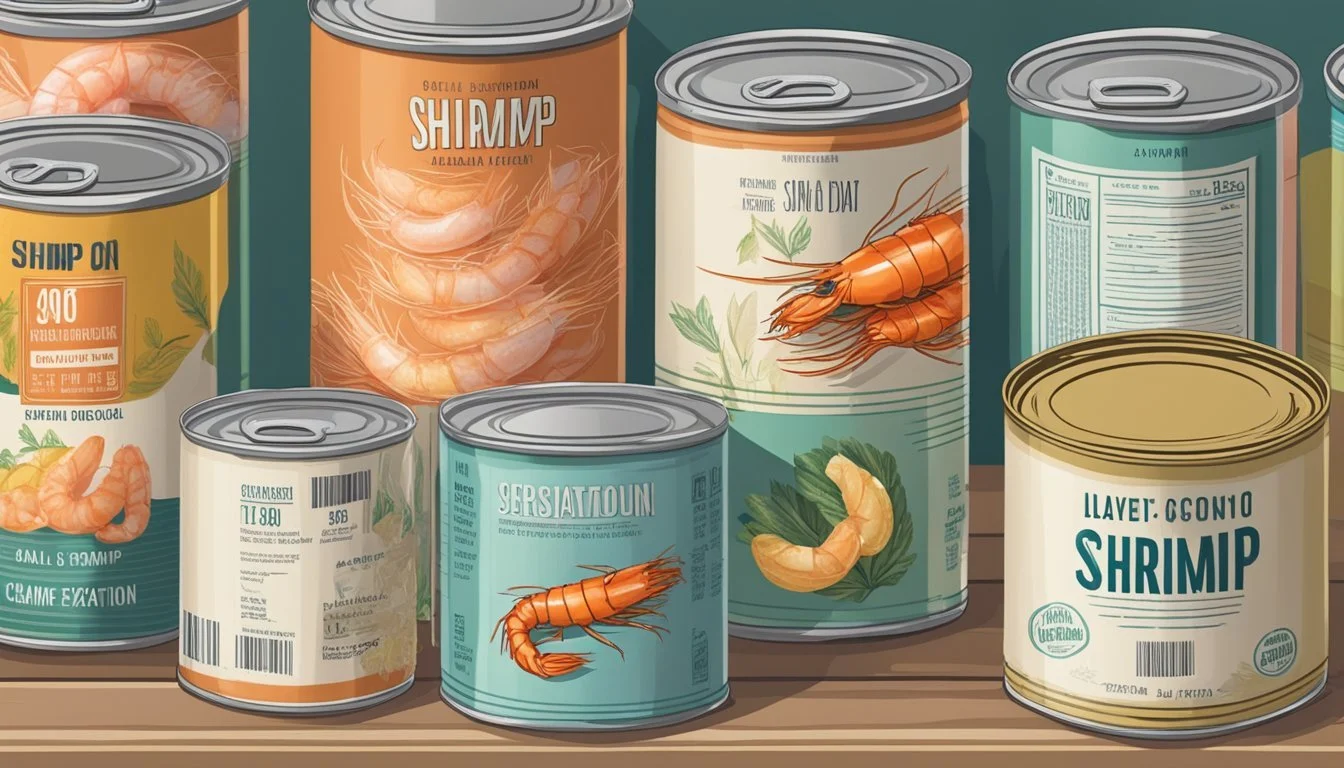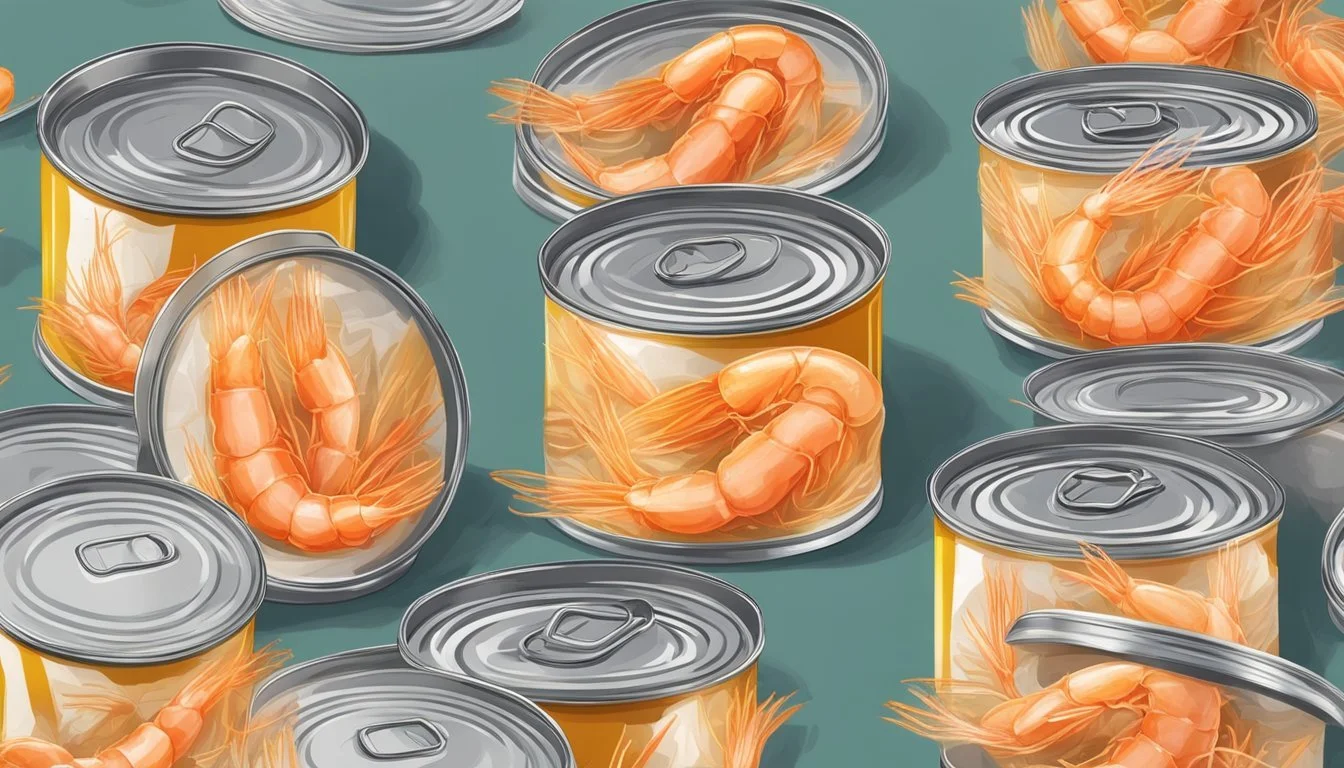Does Canned Shrimp Expire?
Shelf Life and Safety Tips
Canned shrimp can be a convenient and shelf-stable option for seafood lovers, but many wonder about its longevity and safety. The good news is that properly stored, unopened canned shrimp typically remains at its best quality for about 3 to 5 years. This makes it a handy pantry staple, especially for those who like to keep their kitchens well-stocked with ready-to-use ingredients.
The expiration date on canned shrimp provides guidance on how long the product maintains its peak flavor and texture. While the shrimp will generally stay safe beyond this date if the can is undamaged and stored correctly, its quality might decline over time. Storing the canned shrimp in a cool, dry place helps preserve its longevity and ensures it remains a high-quality option for meals.
Once opened, canned shrimp should be transferred from the can and stored in the refrigerator, ideally at or below 40°F. It can last for about 2 to 4 days when properly stored, but for optimum safety and freshness, using it within two days is recommended. By following these storage recommendations, you can enjoy the convenience of canned shrimp without compromising on safety or quality.
Understanding Canned Shrimp
Canned shrimp offers a convenient and nutritious option for seafood lovers, providing an extended shelf life and ease of storage. This section covers the types of canned shrimp available and the benefits they offer to consumers.
Types of Canned Shrimp
There are several types of canned shrimp available, each varying in size and preparation:
Small Shrimp: Often labeled as "tiny" or "miniature," these shrimp are suitable for salads and appetizers.
Medium Shrimp: Commonly used in pasta dishes and stir-fries.
Large Shrimp: Ideal for more substantial meals like shrimp cocktails.
Canned shrimp can also vary in preparation methods:
Plain Shrimp: Shrimp packed in water or brine.
Seasoned Shrimp: Comes pre-seasoned with various herbs and spices.
Shelf Stable: These types often have preservatives added to extend shelf life.
Understanding these variations helps in selecting the right type of canned shrimp for different culinary needs.
Benefits of Canned Shrimp
Canned shrimp offers several benefits:
Convenience: No need for thawing. Ready to use straight from the can.
Long Shelf Life: Properly stored, unopened canned shrimp can last 3 to 5 years, which reduces food waste.
Nutritional Value: A good source of protein, low in calories, and rich in vitamins and minerals.
Healthy Option: Provides essential nutrients like omega-3 fatty acids.
These advantages make canned shrimp a reliable pantry staple for quick, nutritious meals.
Storage Guidelines for Peak Quality
Ensuring the best quality of canned shrimp involves specific storage conditions and techniques to extend its shelf life. Proper handling maintains the shrimp's texture and flavor for longer periods.
Proper Storage Conditions
Unopened canned shrimp should be stored in a cool, dry place. Pantry storage at room temperature is generally ideal. Avoid direct sunlight and places with high humidity to maintain the can’s integrity and product quality.
Once opened, transfer the shrimp to an airtight container and refrigerate immediately. Continuous refrigeration is key. Glass or plastic containers with tight seals are recommended to keep the shrimp fresh.
Extending Shelf Life
For long-term quality, freezing the shrimp after opening offers an effective solution. Store shrimp in freezer-safe containers or heavy-duty freezer bags. Ensure the container is airtight to prevent freezer burn.
Label containers with the date of freezing. Canned shrimp remains at peak quality for 2-4 months when frozen. Proper freezing maintains the shrimp's texture and flavor better than refrigeration alone.
Identifying Signs of Spoilage
When dealing with canned shrimp, identifying spoilage is crucial to ensure safety and maintain quality. Key indicators of spoilage include changes in appearance, texture, odor, and can integrity.
Appearance and Texture
Spoiled canned shrimp may exhibit noticeable changes in color and texture. Fresh shrimp typically have a uniform pink or white color, depending on the species. Discoloration, such as dark spots or yellowing, can be a sign of spoilage.
Texture is another indicator; slimy or mushy shrimp should be discarded immediately. Additionally, the presence of mold growth on the shrimp or inside the can is a clear sign that the shrimp has spoiled and should not be consumed.
Odor and Flavor
Spoiled shrimp will often have an off odor that is distinctly different from its fresh, slightly oceanic smell. A foul or sour odor indicates spoilage and the shrimp should not be eaten.
Upon tasting, if the shrimp has an unpleasant or unusual flavor, this could confirm that the product is spoiled. It’s essential to avoid consuming shrimp that gives off any off-putting flavor or smell, as it could lead to foodborne illness.
Can Integrity
The condition of the can itself can also provide clues about the state of the shrimp inside. Cans that are rusting, leaking, bulging, or dented might indicate compromised safety. Bulging cans suggest that bacteria may have produced gas inside, a serious spoilage sign.
Additionally, if the can is damaged or shows signs of tampering, the shrimp inside should be discarded to avoid potential health risks. Checking the can integrity helps ensure the content remains uncontaminated.
Safety After Expiration Date
When it comes to canned shrimp, understanding the safety of consuming the product after the expiration date is crucial. Key factors include knowing the possible health risks and the proper considerations for assessing quality.
Consumption Considerations
Even if unopened canned shrimp is past its labeled best by, sell by date, or use by date, it can still be safe for consumption if stored properly and the can remains undamaged. It's important to inspect the can for any signs of damage like dents, rust, or swelling, which could indicate contamination.
Storage conditions play a vital role in maintaining safety. High temperatures or moisture can lead to spoilage. Refrigeration after opening is essential, and the shrimp should be consumed within 3 to 4 days to avoid the risk of foodborne illness.
Risks of Spoiled Seafood
Spoiled shrimp can pose significant health risks due to potential contaminants and foodborne illness. Symptoms might include nausea, vomiting, diarrhea, and stomach cramps. Bacterial contamination such as Clostridium botulinum can occur in improperly stored or damaged cans, leading to severe health issues.
To assess if shrimp is spoiled, check for off-putting smells, discoloration, and texture changes. Spoiled seafood might have a sour or rancid odor, and the shrimp itself could appear faded or slimy.
Proper food safety practices can mitigate these risks, but when in doubt, it's safer to dispose of questionable canned shrimp to avoid any adverse effects on health.
Optimal Usage and Recipes
Canned shrimp is a versatile ingredient that can be incorporated into various dishes. Proper preparation ensures that its flavor and texture complement your culinary creations.
Incorporating Canned Shrimp in Meals
Canned shrimp can enhance a variety of meals due to its convenience and long shelf life. For quick appetizers, try adding it to shrimp cocktail or mix into stuffed avocados. It pairs well with vegetables in shrimp salads, providing a protein-packed meal. Soups and stews also benefit from the inclusion of canned shrimp, such as in a hearty shrimp chowder. For a refreshing option, combine with fruit to create a citrus shrimp salad.
Using canned shrimp in these recipes offers a fast and delicious alternative to fresh shrimp, especially when time is of the essence.
Preparing Shrimp for Best Flavor
To ensure optimal flavor, rinse the canned shrimp under cold water before use. This step helps remove any excess salt or brine. If using in hot dishes, consider adding the shrimp towards the end of cooking to prevent overcooking and maintain its tender texture.
Enhance the shrimp's natural flavor with simple seasoning. A dash of lemon juice and a sprinkle of herbs such as dill or parsley can brighten the taste. For salads or cold dishes, marinating the shrimp briefly in a vinaigrette can add depth to the flavor profile.
Properly preparing canned shrimp maximizes its quality and ensures your dishes taste fresh and delicious.
Maintaining Food Quality
Ensuring the quality of canned shrimp involves understanding several key factors and considering the impact of the environment on the preservation of food. Proper storage and handling can significantly affect both safety and taste.
Food Quality Factors
Quality in canned foods is influenced by the initial nutrition and hygiene standards maintained during processing. For example, shrimp should be canned under strict sanitary conditions to avoid contamination that can degrade quality.
Moisture control inside the can is crucial, as too much moisture can lead to spoilage. The balance of proteins, calories, and other nutrients can be impacted if not properly managed. Freezing can extend shelf life, but it's essential to thaw shrimp properly to maintain texture and flavor.
Understanding the role of acid in preserving canned shrimp is also important. Acidic environments help prevent bacterial growth, preserving both quality and safety.
Environmental Impact on Food Preservation
Heat and moisture are primary environmental factors affecting canned shrimp. Storing cans in a cool, dry place can prevent heat-induced spoilage and rusting from moisture exposure. Extreme temperatures can compromise the integrity of the can, leading to quality degradation.
Properly freezing opened shrimp can extend its usable life. However, freezing must be followed by refrigeration at correct temperatures to keep the shrimp safe for consumption. Refrigeration slows down bacterial growth, ensuring hygiene and food safety.
Additionally, reducing food costs involves extending shelf life through mindful storage practices. Sustaining the environment by minimizing waste is also vital. Canned foods preserve resources by lasting longer and requiring less frequent replenishment, reducing both waste and cost.






